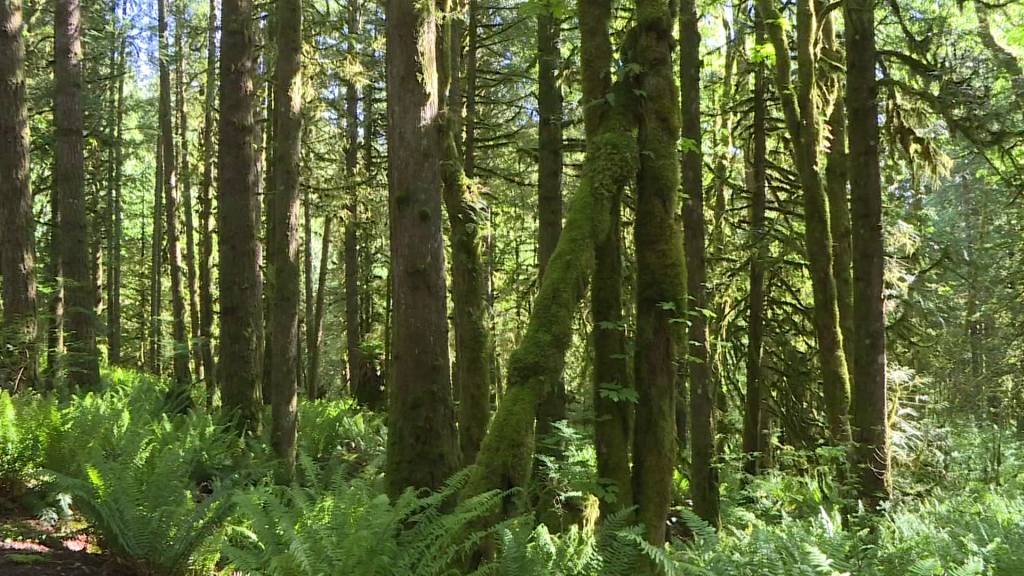Nature Agreement welcomed by BC Assembly of First Nations

Posted November 3, 2023 1:26 pm.
A Nature Agreement to protect at least 30 per cent of B.C.’s land and waters has been signed by the federal and provincial governments, and local First Nations.
The $1-billion deal is not entirely new funding, but it is being focused on Indigenous-led conservation projects between now and 2030.
Some of the goals of the Framework Agreement include recognizing First Nations leadership in ecosystem stewardship, and doing the work “consistent with the United Nations Declaration on the Rights of Indigenous Peoples and any related agreements.”
“Being Indigenous in a colonial system isn’t easy. I think, coming to this point of a tripartite agreement was never easy. Next month will be the one-year anniversary when we were approached by the provincial and federal governments to sign and partner on the Nature Agreement,” said BC Assembly of First Nations Regional Chief Terry Teegee.
He says conserving 30 per cent by 2030 is only but a start, adding, “nevertheless, the goals are out there, internationally and was adopted by Canada and British Columbia.”
The agreement, which the federal government describes as the “first of its kind,” comes at a critical time, according to Teegee.
“We’ve experienced this past year unprecedented drought, unprecedented wildfire season in Canada’s history, in the province’s history, and, certainly, part of that is conserving biodiverse areas,” he said Friday, welcoming the deal.
He underscored the importance of Indigenous communities being involved in decisions on their territories.
“We were brought on board in terms of discussing this with our chiefs, our leaders, to talk about, what does this mean? What does conservation mean, in terms of an Indigenous perspective? And as knowledge keeper, the late Dr. Sophie Thomas from the Saik’uz, stated, ‘Take care of the land and the land will take care of you,'” Teegee explained.
“We are people of the earth. We come from the earth, and we’ll go back to the earth.”
The agreement includes objectives in four areas: Habitat and ecosystem conservation and protection; Habitat enhancement and restoration; Species at risk protection and recovery; and Foundational knowledge and information sharing.
Tripartite agreement a good start, but doesn’t go far enough, environmental group says
Charlotte Dawe, conservation and policy campaigner for the Wilderness Committee, says the fact the agreement is tripartite and includes the First Nation Leadership Council “is absolutely huge and crucial,” adding any such work in the future should also include “the rightful title holders at the table with decision-making abilities.”
However, Dawe feels the agreement doesn’t go far enough.
“This agreement is meant to help achieve Canada’s target of protecting 30 per cent of land and water by 2030. That is a great target when you think about it. Obviously, the protection of lands and territories from industrial extraction is key to preserving biodiversity. However, the definition on what counts as protection can be incredibly weak, and so they are relying on certain protection measures that does allow industrial activity,” she explained.
“You cannot say an area is protected if you are still allowing mining, logging, oil and gas. If that were the case, we could say 100 per cent of B.C. is protected right?”
In particular, Dawe says the deal lacks teeth to protect at-risk species. While she agrees the protection of land will “go a long way … in helping biodiversity and wildlife recover,” she says the way industrial projects operate in B.C. still needs to be changed.
“We need more equity from industry that does operate on the landscape, and we need to hold them to a higher standard,” Dawe told CityNews. “The way that our laws are in B.C. and Canada allow extinction and we need to change that, so that industrial projects are held to a higher standard. This agreement does not talk about that. There might be something coming in the next couple of weeks here.”








